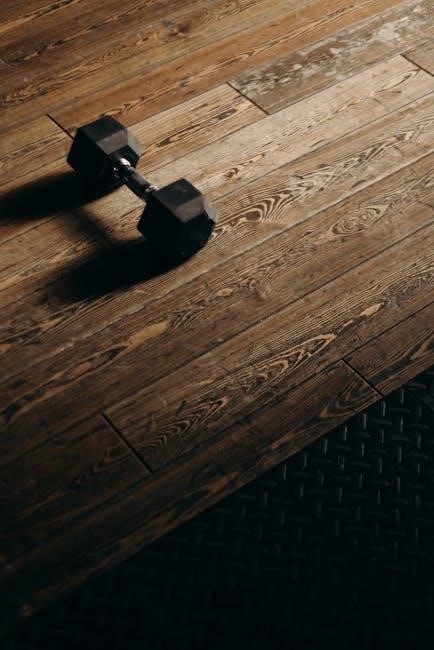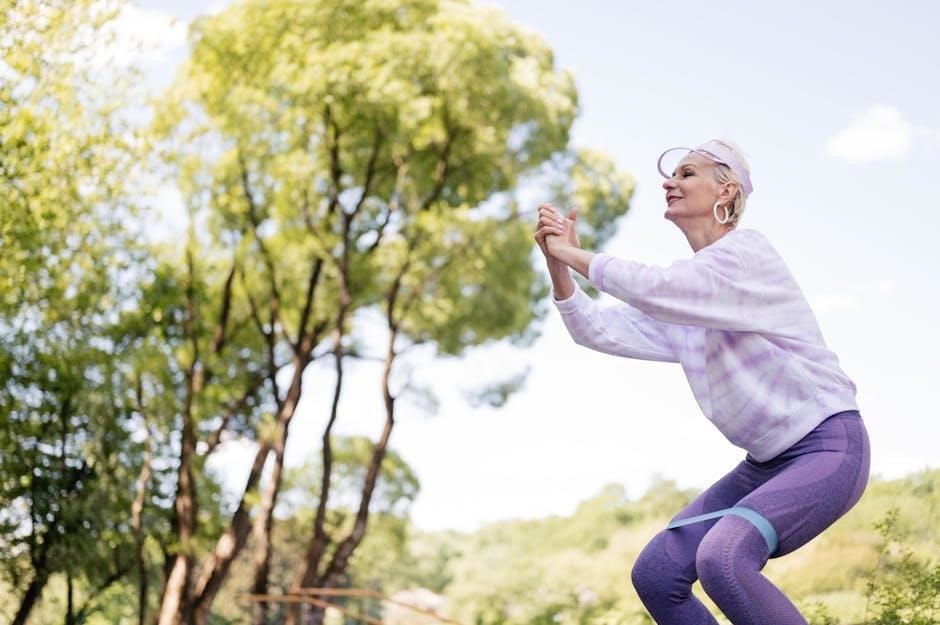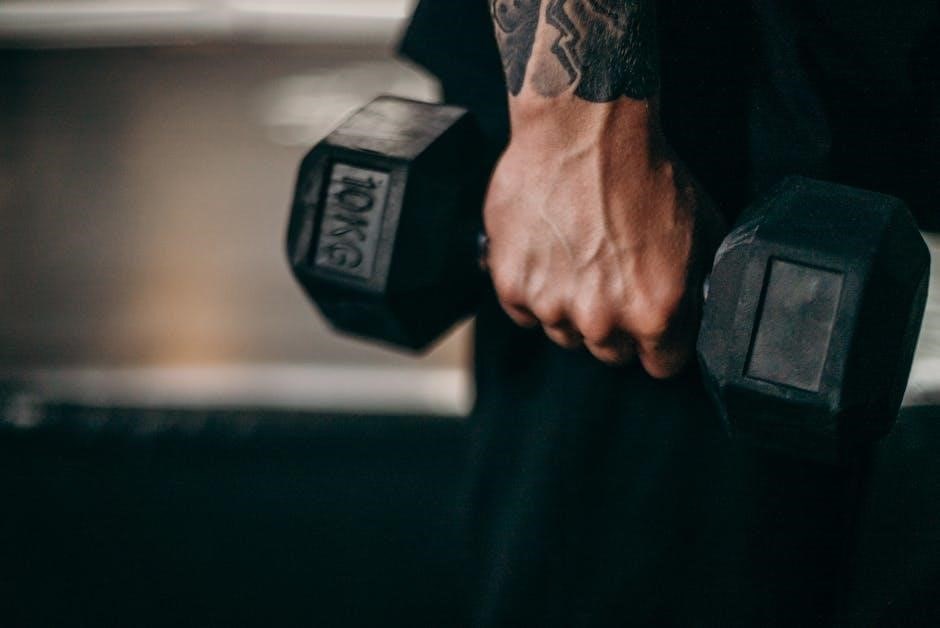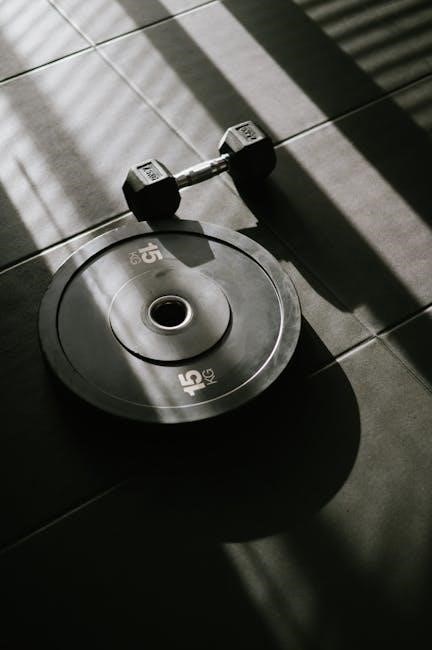seated resistance band exercises pdf
Summary
Unlock a full-body workout with our free seated resistance band exercises PDF! Perfect for all fitness levels, build strength & tone muscles from the comfort of home. Download now!

Resistance bands offer a convenient and versatile way to build strength and improve fitness, especially for home workouts.
These portable tools are easily stored and adaptable for all fitness levels, providing an alternative to traditional weights.

Often underestimated, resistance bands can be incredibly effective when used correctly, becoming a valuable asset in your strength training regimen.
You can target various muscle groups – arms, legs, and core – with seated exercises, making them accessible even without extensive equipment.
This approach is ideal for those seeking a straightforward, yet impactful, workout solution directly within the comfort of their own home.
Benefits of Seated Resistance Band Training
Seated resistance band training presents a multitude of advantages, making it a fantastic option for individuals of all fitness levels and abilities. One key benefit is accessibility; these exercises require minimal space and equipment, perfect for home workouts or travel. Unlike heavy weights, resistance bands are gentle on the joints, reducing the risk of injury, particularly beneficial for those with pre-existing conditions or during rehabilitation.
Enhanced muscle activation is another significant advantage. The constant tension provided by the bands challenges muscles throughout the entire range of motion, leading to improved strength and endurance. Seated positions offer increased stability, allowing for focused muscle engagement and better form. This is particularly helpful for targeting specific muscle groups, like biceps or triceps, with greater precision.
Furthermore, resistance bands are incredibly versatile. They can be easily adjusted to modify the intensity of the workout, catering to both beginners and advanced users. This adaptability promotes progressive overload, a crucial principle for continuous improvement. Finally, incorporating seated resistance band exercises into your routine can contribute to improved posture and core stability, enhancing overall functional fitness and daily movement patterns.
Resistance Band Levels and Selection
Choosing the right resistance band is crucial for maximizing your workout effectiveness and preventing injury. Bands typically come in varying levels of resistance, often color-coded for easy identification. Light resistance (yellow/green) is ideal for beginners, rehabilitation exercises, or warming up muscles. It’s perfect for learning proper form and building a foundation of strength.
Medium resistance (red/blue) offers a moderate challenge, suitable for individuals with some exercise experience. This level is great for building endurance and toning muscles. Heavy resistance (black/purple) is designed for advanced users seeking to increase strength and muscle mass. It requires good form and control to avoid strain.

When selecting bands, consider the material – latex and thermoplastic elastomer (TPE) are common options. Latex offers excellent elasticity, while TPE is hypoallergenic. Sets of bands providing a range of resistances are highly recommended, allowing for progressive overload and exercise variation. Start with a lighter resistance and gradually increase it as your strength improves, ensuring proper technique throughout each exercise.

Upper Body Exercises
Seated resistance band training effectively targets arms, shoulders, chest, and back. These exercises offer a convenient way to strengthen and tone your upper body muscles at home.
Utilizing bands allows for focused muscle engagement and controlled movements, enhancing overall upper body fitness.
Seated Bicep Curls
Seated bicep curls are a fantastic exercise for isolating and strengthening your biceps using resistance bands. To begin, sit comfortably on a chair with your feet flat on the floor, maintaining a good posture. Secure the resistance band under your feet, ensuring it’s centered.
Hold the handles of the band with your palms facing upwards, keeping your elbows close to your sides. This is your starting position. Slowly curl the band upwards towards your shoulders, focusing on contracting your biceps throughout the movement.
Maintain a controlled tempo, avoiding any jerky motions. At the peak of the curl, squeeze your biceps firmly. Then, slowly lower the band back to the starting position, resisting the pull of the band.
Repeat for the desired number of repetitions. Remember to choose a resistance level that challenges you while allowing you to maintain proper form. Proper form is crucial to avoid injury and maximize effectiveness. Focus on controlled movements and consistent muscle engagement for optimal results. This exercise is a great alternative when dumbbells aren’t available.
Seated Tricep Extensions
Seated tricep extensions effectively target the back of your upper arms, building strength and definition. Begin by sitting on a chair with your feet firmly planted on the floor, maintaining a straight back. Secure one end of the resistance band under your seat.
Hold the other end of the band with both hands, extending your arms overhead. Keep your elbows close to your head throughout the exercise. This is your starting position. Slowly bend your elbows, lowering the band behind your head while keeping your upper arms stationary.
Focus on isolating your triceps during this movement. Extend your arms back to the starting position, contracting your triceps and squeezing at the top of the movement.
Maintain a controlled tempo and avoid locking your elbows at the top. Choose a band resistance that provides a challenge without compromising your form. Consistent practice with proper technique will yield the best results; This exercise is a valuable addition to any arm-strengthening routine, especially when access to traditional weights is limited.
Seated Shoulder Press
Seated shoulder presses with a resistance band are excellent for developing strong and well-defined shoulders. Begin by sitting comfortably on a chair with your back straight and feet flat on the floor. Position the center of the resistance band under your feet, holding an end in each hand.
Bring your hands up to shoulder height, elbows bent at 90 degrees, palms facing forward. This is your starting position. Slowly press your hands upwards, extending your arms overhead, focusing on using your shoulder muscles to lift the band.
Maintain control throughout the movement, avoiding any jerky motions. At the top of the press, briefly pause and squeeze your shoulder muscles. Slowly lower your hands back to the starting position, resisting the pull of the band.
Select a band resistance that challenges you while allowing you to maintain proper form. Consistent practice will enhance shoulder strength and improve overall upper body stability. This exercise is a fantastic alternative to dumbbell presses, offering a convenient and effective workout solution.
Seated Lateral Raises
Seated lateral raises effectively target the medial deltoid, contributing to broader shoulders and improved upper body definition. Secure the resistance band under your feet, seated comfortably on a chair with a straight back and planted feet. Grip the band’s ends with palms facing your body.
Keep a slight bend in your elbows throughout the exercise. Slowly raise your arms out to the sides, maintaining this bend, until your arms reach shoulder height. Focus on leading with your elbows and avoiding shrugging your shoulders.
Pause briefly at the top of the movement, feeling the contraction in your medial deltoids; Slowly lower your arms back to the starting position, controlling the band’s resistance.
Choose a band that provides a challenging yet manageable resistance level. Proper form is crucial; avoid swinging or using momentum. Regular practice of seated lateral raises will strengthen your shoulders and enhance your upper body physique, offering a convenient alternative to traditional weights.
Seated Front Raises
Seated front raises are excellent for targeting the anterior deltoids, contributing to well-rounded shoulder development and improved upper body strength. Begin by sitting on a chair with your feet firmly planted and the resistance band secured under both feet. Hold the band’s ends with your palms facing your thighs.
Maintain a slight bend in your elbows throughout the exercise. Slowly raise one arm straight in front of you, keeping the band taut, until it reaches shoulder height. Avoid locking your elbow and focus on controlled movement.
Pause briefly at the top, feeling the contraction in your front deltoid. Slowly lower your arm back to the starting position, resisting the band’s pull. Alternate arms with each repetition, or complete all repetitions on one side before switching.
Select a resistance band that challenges you without compromising form. Proper technique is vital; avoid swinging or using momentum. Consistent practice of seated front raises will build shoulder strength and enhance your overall upper body definition.
Seated Rows
Seated rows with a resistance band effectively target the back muscles, promoting improved posture and upper body strength. Secure the band around a stable object at chest height, or have a partner hold one end securely. Sit on the floor or a chair with your legs extended and feet flexed.
Grasp the band with both hands, palms facing each other. Maintain a straight back and engage your core throughout the exercise. Pull the band towards your abdomen, squeezing your shoulder blades together. Keep your elbows close to your body during the pull.
Focus on initiating the movement with your back muscles, not your arms; Hold the contracted position briefly, feeling the engagement in your upper back. Slowly and controlled, return to the starting position, resisting the band’s pull.
Adjust the band’s resistance to match your strength level. Proper form is crucial; avoid rounding your back or jerking the movement. Regular seated rows contribute to a stronger, more defined back.
Seated Chest Press
Seated chest press with a resistance band is an excellent exercise for strengthening the chest muscles, offering a convenient alternative to traditional weightlifting. Secure the band around your back, positioning it under your armpits. Sit comfortably on a chair or the floor with your back straight and core engaged.
Grasp the band ends with your hands, palms facing forward, elbows bent at a 90-degree angle. Slowly extend your arms forward, pressing the band away from your chest, mimicking a dumbbell chest press. Focus on squeezing your chest muscles during the extension.
Maintain control throughout the movement, avoiding locking your elbows at the peak contraction. Slowly return your hands to the starting position, resisting the band’s pull. Adjust the band’s resistance to challenge your chest muscles effectively.
Proper form is vital; keep your back straight and avoid arching. This exercise builds chest strength and definition, contributing to a well-rounded upper body workout.
Seated Reverse Flyes
Seated reverse flyes utilizing a resistance band are a fantastic exercise for targeting the rear deltoids and upper back muscles, promoting improved posture and shoulder stability. Sit comfortably on a chair with your back straight and core engaged, feet flat on the floor.
Secure the resistance band around a stable object or under your feet, holding the ends with your hands, palms facing each other. Maintain a slight bend in your elbows throughout the exercise. Initiate the movement by pulling the band outwards, squeezing your shoulder blades together.
Focus on leading with your elbows, keeping them at shoulder height. Avoid shrugging your shoulders during the movement; concentrate on isolating the rear deltoids. Slowly return to the starting position, controlling the band’s resistance.
Adjust the band’s tension to match your strength level. Proper form is crucial to prevent injury and maximize effectiveness. This exercise enhances upper back strength and contributes to balanced shoulder development.

Lower Body Exercises
Seated resistance band exercises effectively target your legs and glutes, offering a convenient way to build strength and endurance.
These exercises are low-impact and adaptable for various fitness levels, providing a comprehensive lower body workout.
Seated Leg Extensions
Seated leg extensions with a resistance band are a fantastic way to isolate and strengthen your quadriceps muscles. To perform this exercise, securely anchor the resistance band around a stable object, like a chair leg or sturdy table base. Sit upright on a chair with your back straight and feet flat on the floor.
Loop the other end of the band around one ankle. Slowly extend your leg forward, keeping your thigh stable and focusing on contracting your quad. Avoid locking your knee at the top of the movement.
Control the band as you slowly return your leg to the starting position. Repeat for the desired number of repetitions before switching to the other leg.
Form Tips: Maintain a neutral spine throughout the exercise. Avoid swinging your leg or using momentum. Focus on a controlled, deliberate movement. Adjust the band resistance to match your fitness level. Start with a lighter band and gradually increase the resistance as you get stronger. This exercise is excellent for building leg strength and improving knee stability.
Seated Hamstring Curls
Seated hamstring curls using a resistance band effectively target the muscles at the back of your thighs. Begin by securely anchoring the resistance band to a stable, low object – a chair leg works well. Sit firmly on a chair, ensuring your back remains straight and your core engaged throughout the exercise.
Loop the free end of the band around one ankle. Keeping your thigh stable, slowly curl your heel towards your glutes, resisting the pull of the band. Focus on squeezing your hamstring muscle during the contraction.
Maintain control as you slowly extend your leg back to the starting position. Complete the desired number of repetitions on one leg before repeating on the other side.
Important Considerations: Avoid jerking movements; prioritize a slow, controlled curl. Adjust the band’s resistance to suit your strength level. Proper form is crucial to prevent injury and maximize effectiveness. This exercise enhances hamstring strength and flexibility, contributing to overall lower body power.
Seated Glute Bridges
Seated glute bridges with a resistance band are a fantastic way to isolate and strengthen your gluteal muscles. Begin by sitting on the floor with your knees bent and feet flat, hip-width apart. Securely loop a resistance band around your thighs, just above your knees.
Maintaining a straight back and engaged core, gently lean back slightly, initiating the bridge movement. Press your feet into the floor and squeeze your glutes as you lift your hips off the ground, extending your body into a bridge position.
The resistance band adds extra challenge, forcing your glutes to work harder to maintain proper form and prevent your knees from collapsing inward. Hold the bridge position briefly at the peak contraction.
Key Focus: Slowly lower your hips back to the starting position, maintaining tension on the band throughout the movement. Control is paramount; avoid rushing the exercise. This exercise improves glute strength, hip stability, and overall lower body power.
Seated Calf Raises
Seated calf raises utilizing a resistance band effectively target the gastrocnemius and soleus muscles, crucial for ankle stability and lower leg strength. Begin by sitting on a chair or bench with your feet flat on the floor, hip-width apart. Securely loop the resistance band around the balls of your feet, holding the ends firmly in your hands.
Ensure the band provides a comfortable level of resistance. Keeping your thighs stationary and your back straight, slowly raise your heels off the floor, contracting your calf muscles. Focus on a controlled, deliberate movement, maximizing the squeeze at the top of the raise.
The resistance band intensifies the exercise, demanding greater effort from your calf muscles throughout the range of motion. Hold the contracted position briefly, then slowly lower your heels back to the starting position;
Key Focus: Maintain consistent tension on the band and avoid bouncing or using momentum. This exercise enhances calf definition, improves ankle strength, and contributes to overall lower body functionality.
Seated Hip Abduction
Seated hip abduction with a resistance band is an excellent exercise for strengthening the gluteus medius, a key muscle for hip stability and preventing lower body imbalances. Begin by sitting upright on a chair, with your back straight and core engaged. Securely loop the resistance band around your thighs, just above your knees.
Maintain a comfortable tension on the band. Keeping your feet flat on the floor, slowly and deliberately move one leg outwards, away from the midline of your body, against the resistance of the band. Focus on initiating the movement from your hip, not your knee or ankle.
Feel the contraction in your outer hip and gluteal muscles as you abduct your leg. Hold the extended position briefly, then slowly return your leg to the starting position, controlling the movement against the band’s resistance.

Important Note: Avoid leaning or twisting your torso during the exercise. This movement improves hip stability, strengthens the glutes, and enhances functional movement patterns.
Seated Hip Adduction
Seated hip adduction, utilizing a resistance band, effectively targets the inner thigh muscles – the adductors – crucial for balanced leg strength and overall lower body function. Begin by sitting firmly on a chair, ensuring your back remains straight and your core is actively engaged throughout the exercise.
Securely loop the resistance band around your ankles. Maintaining a stable posture, slowly bring one leg inwards, towards the midline of your body, working against the band’s resistance. Concentrate on squeezing your inner thigh muscles as you perform the adduction.
Avoid rotating your hips or leaning your torso; maintain a neutral spine. Hold the contracted position for a brief moment, fully feeling the engagement in your adductor muscles. Then, slowly and with control, return your leg to the starting position, resisting the band’s pull.
Key Focus: This exercise enhances inner thigh strength, improves hip stability, and contributes to balanced muscle development. Consistent practice will yield noticeable improvements in lower body strength and functionality.

Core Exercises
Strengthening your core with seated resistance band exercises enhances stability and posture. These movements effectively engage abdominal and back muscles, improving overall functional fitness.
Resistance bands add challenge to twists and torso rotations, building a stronger, more resilient core.
Seated Russian Twists with Resistance Band
Seated Russian twists with a resistance band are a fantastic exercise for targeting your obliques and enhancing core rotational strength. To begin, sit on the floor with your knees bent and feet slightly elevated, maintaining a straight back. Secure the resistance band around your feet, holding the ends with both hands.

Engage your core and lean back slightly, keeping your back straight throughout the movement. Slowly twist your torso to one side, bringing the resistance band across your body. Focus on controlled movements, resisting the pull of the band.
Then, twist to the other side, repeating the motion. Ensure the resistance band remains taut throughout the exercise. Avoid rounding your back or jerking movements.
Proper form is crucial to maximize effectiveness and prevent injury. Start with a lighter resistance band and gradually increase the resistance as your core strength improves. Aim for 15-20 repetitions on each side for 3-4 sets. This exercise is a great addition to any seated resistance band workout, promoting a stronger and more stable core.
Seated Wood Chops
Seated wood chops with a resistance band effectively target your obliques, core, and lower back, mimicking the motion of chopping wood. Begin by sitting on a chair or bench with your feet flat on the floor. Secure the resistance band around a stable object, like a chair leg, at a low position.
Grasp the band with both hands, keeping your elbows slightly bent. Rotate your torso diagonally across your body, pulling the band from the low position up and across your body, as if chopping wood. Maintain a straight back and engage your core throughout the movement.
Slowly return to the starting position, resisting the band’s pull. Repeat on the opposite side, alternating between left and right. Focus on controlled movements and avoid twisting from your lower back.
Start with a lighter resistance band and gradually increase the resistance as you gain strength. Aim for 12-15 repetitions on each side for 3-4 sets. This exercise enhances rotational power and core stability, making it a valuable addition to your seated resistance band routine.
Seated Torso Twists
Seated torso twists with a resistance band are a fantastic exercise for strengthening your obliques and improving rotational core strength. Begin by sitting upright on a chair or bench, feet firmly planted on the floor. Secure the resistance band around a stable object in front of you, at roughly chest height.
Hold the band with both hands, arms extended. Keeping your back straight and core engaged, gently twist your torso to one side, pulling the band across your body. Focus on rotating from your waist, not just moving your arms.
Slowly return to the center, resisting the band’s pull, and then twist to the opposite side. Maintain control throughout the movement, avoiding jerky motions.
Choose a band resistance that challenges you without compromising your form. Aim for 15-20 repetitions on each side, completing 3-4 sets. This exercise improves spinal mobility and enhances core stability, contributing to better posture and overall functional fitness.
Workout Planning & Safety
Effective routines require careful planning, prioritizing proper form and technique. Always warm up before starting, and cool down afterward. Listen to your body,
and progress gradually.
Creating a Seated Resistance Band Workout Routine
Designing a routine involves selecting exercises that target different muscle groups. Begin with a full-body approach, incorporating upper body, lower body, and core movements. A balanced routine prevents overworking specific areas and promotes overall strength.
Consider a circuit-style workout, performing each exercise for a set duration (e.g., 30-60 seconds) with minimal rest between exercises. Complete 2-3 circuits, resting 1-2 minutes between each circuit. This maximizes efficiency and cardiovascular benefits.
Vary the resistance band levels throughout the week. Use lighter bands for higher repetitions and endurance, and heavier bands for lower repetitions and strength. This progressive overload challenges your muscles and promotes continuous improvement.
Structure your routine with a warm-up, including dynamic stretches like arm circles and leg swings. Follow with your resistance band exercises, and conclude with static stretches, holding each stretch for 20-30 seconds. Consistency is key – aim for 2-3 sessions per week;

Remember to adjust the routine based on your fitness level and goals. Don’t hesitate to modify exercises or reduce the intensity if needed. Prioritize proper form over the number of repetitions or the resistance level.
Proper Form and Technique
Maintaining correct form is paramount to maximizing effectiveness and preventing injuries during seated resistance band exercises. Focus on controlled movements throughout each exercise, avoiding jerky or rushed motions. Engage your core muscles to stabilize your spine and maintain proper posture.
When performing bicep curls, keep your elbows close to your body and avoid swinging your arms. For tricep extensions, ensure your upper arms remain stationary. During shoulder presses, avoid shrugging your shoulders towards your ears.
With seated rows, pull the band towards your torso, squeezing your shoulder blades together. In chest presses, maintain a slight bend in your elbows and avoid locking them out. Pay attention to your breathing – exhale during the exertion phase and inhale during the release phase.

If you’re unsure about proper form, consult instructional videos or a qualified fitness professional. Prioritize quality over quantity; fewer repetitions with correct form are more beneficial than many repetitions with poor technique. Listen to your body and stop if you experience any pain.
Safety Precautions and Considerations
Prioritize safety when incorporating seated resistance band exercises into your routine. Always inspect your bands for any cracks, tears, or signs of wear before each use. Damaged bands can snap during exercise, causing injury.
Secure the band properly, ensuring it’s firmly anchored to a stable object or under your body weight. Avoid overstretching the band beyond its recommended limit, as this can also lead to breakage. Start with a lower resistance level and gradually increase it as your strength improves.
Warm up your muscles before starting your workout and cool down afterward with gentle stretches. Stay hydrated by drinking water before, during, and after exercise. If you have any pre-existing medical conditions, consult your doctor before beginning a new exercise program.
Pay attention to your body and stop immediately if you experience any pain, dizziness, or discomfort. Choose a chair that provides adequate support and stability. Avoid using bands near sharp objects or surfaces that could damage them.